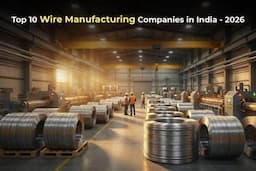“A new scientific truth does not triumph by convincing its opponents and making them see the light, but rather because its opponents eventually die, and a new generation grows up that is familiar with it.”
Max Planck, Scientific Autobiography and Other Papers
Artificial Intelligence
AI is lit! as reported by Crunchbase about 4 billion US$ has been invested for the same in the United States alone. The ability to apply AI to enhance and automate decision making, renovate existing business models and well building up a large ecosystem to make existing customer experience better has started an arms race of sorts between software vendors. Vendors are inclined to better implementation, forecasting reliable and alter risk management has led to huge investments in AI and machine learning. Yes, AI cannot replace your existing clairvoyant soothsayer but it can for sure find patterns and predict future scenarios. The combining of patterns and other prescriptive faculties can prove to be game changer in supply chain revolution letting people of higher faculties dedicate their energies to more pressing matters like strategic network design and capacity planning. Recently on April 9th 2018 SenseTime Group Ltd., has raised more than 3 billion in funds for AI development. Its service code “Viper will help in global surveillance, augmented reality and autonomous driving.”
Mobile Robots for the Warehouse: An Autonomous innovation
Looking to make general amends for your warehouse AMRs can lead the way for you. Multinational suppliers are renovating their supply chains by integrating these flexible and collaborative robots for in house transportation. Much different than their related brothers Automated Guided Vehicles (AGVs) who require the guidance of cables and wires to travel along demarcated spaces, AMRs navigate via maps constructed by either the software via its laser scanners or via pre loaded facility drawings. It uses data from built in lasers and cameras as well as software to detect surroundings and travel from source to destination avoiding obstacles such as forklifts, pallets and people on its way. Robots that can charge themselves on their own sounds futuristic right well for instance the erstwhile known Kiva Systems now deployed by Amazon under Amazon Robotics has proven a solid ROI for them since 2012.
Internet of Things
In selected supply chain domains IOT is already on a growth path. The world has already ushered into the second generation of internet. However, rarely this has been made use by supply chain management for end-to-end processes. It is time for SCMs to harbor the potential of asset utilization, a higher uptime through maintenance and monitoring, by understanding customer behavior and needs in sectors such as preventative maintenance, sourcing, manufacturing, and logistics.
Immersive Technologies: A Future with AR VR & VPA
AR and VR is way above just gaming and have the ability to revolutionize the world of Supply Chain Management. DHL Employees are making use of Augmented Reality to make order picking process faster, similarly VR is trying to make delivery processes safer and efficient as it can encode the packages with scannable images for people who are at helm of unloading. It can also help facial recognition for secured deliveries. Similarly, Chatbots are revolutionizing supply chain by taking interaction to a whole new level of conversational commerce. Without any human intervention Virtual Personal Assistants (VPAs) can handle discovery questions can ensure delivery and provide a better customer service.
Freight Uberization
Companies are investing in Uber type technologies, imagine the potential one can harness the way Uber transformed the taxi industry. “A series of startups are vying to become an Uber of trucking,’ leveraging truck drivers’ smartphones to quickly connect them with nearby companies looking to ship goods. The upstarts aim to reinvent a fragmented U.S. trucking industry that has long relied on third-party brokers, essentially travel agents for trucking who connect truckers with customers.”
In order to Stay Updated with latest happenings in Supply Chain Transformation, subscribe to our newsletter.




